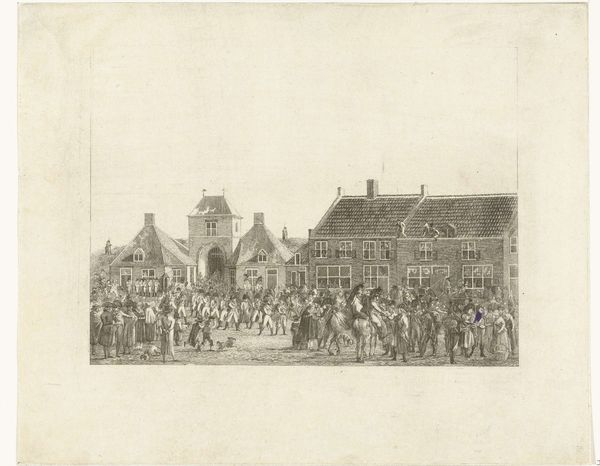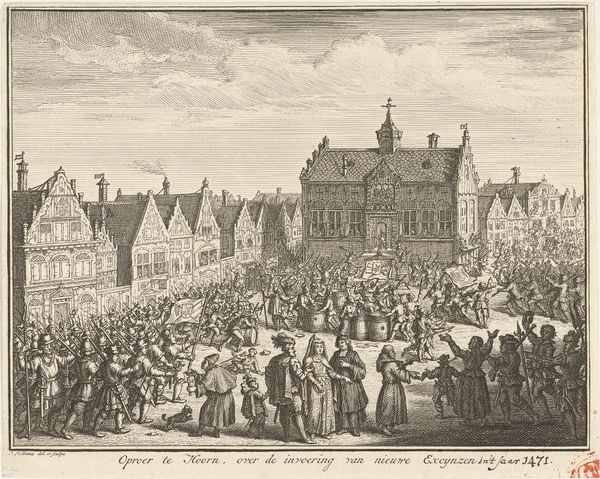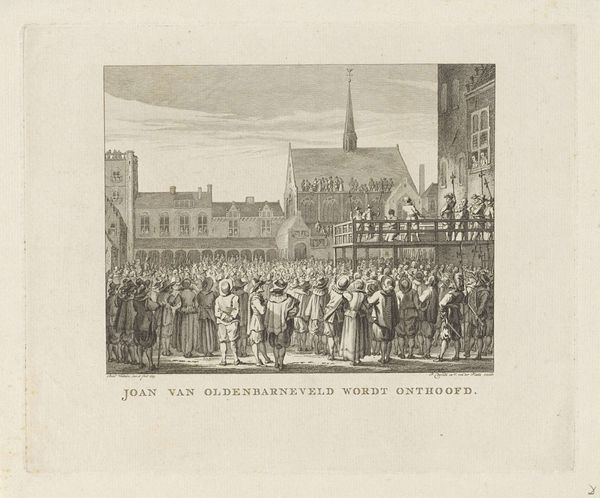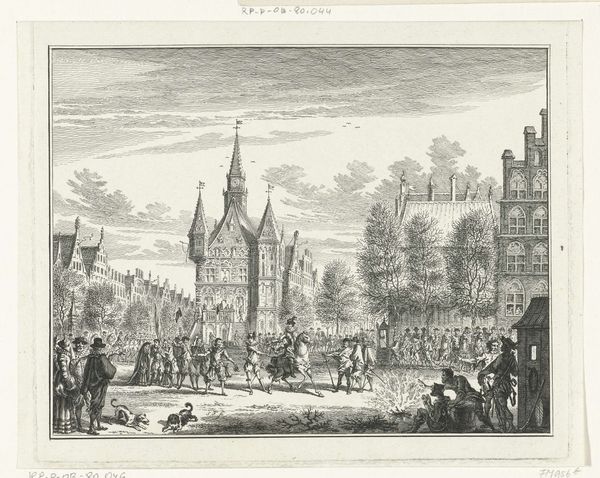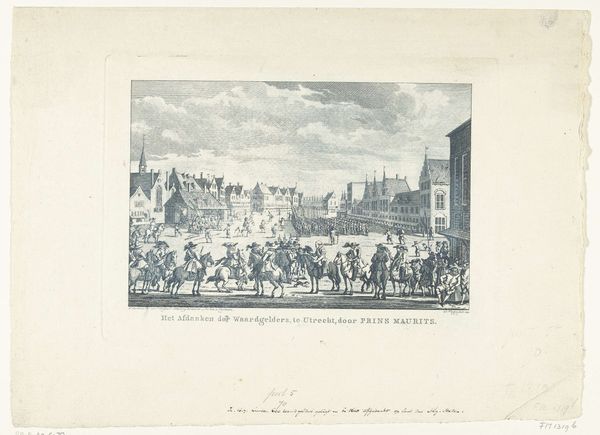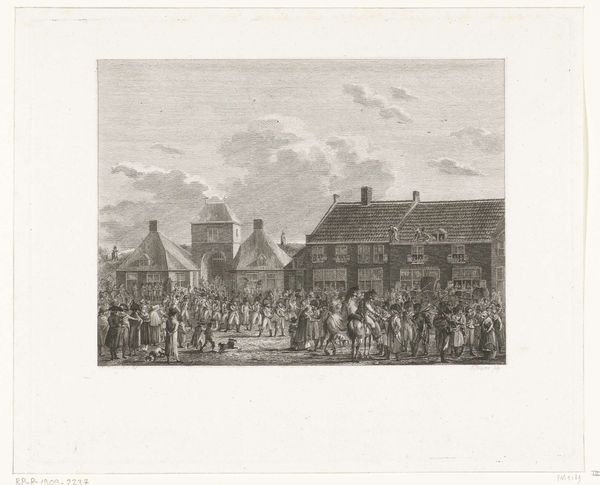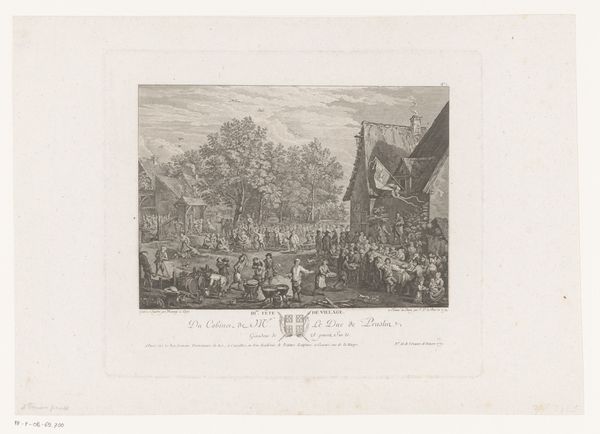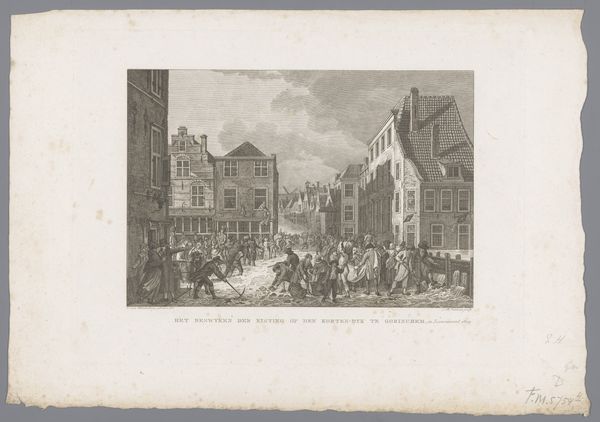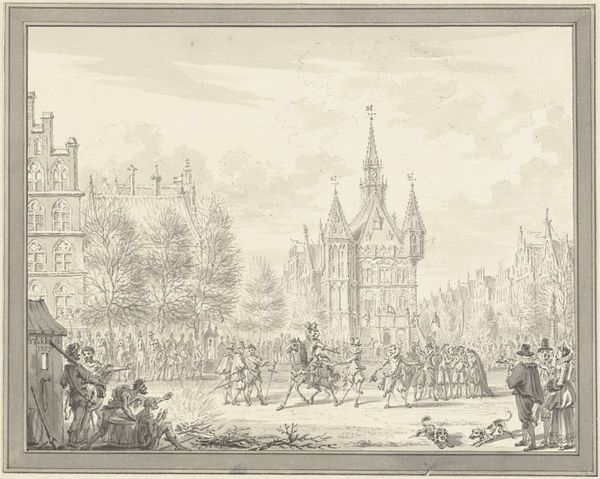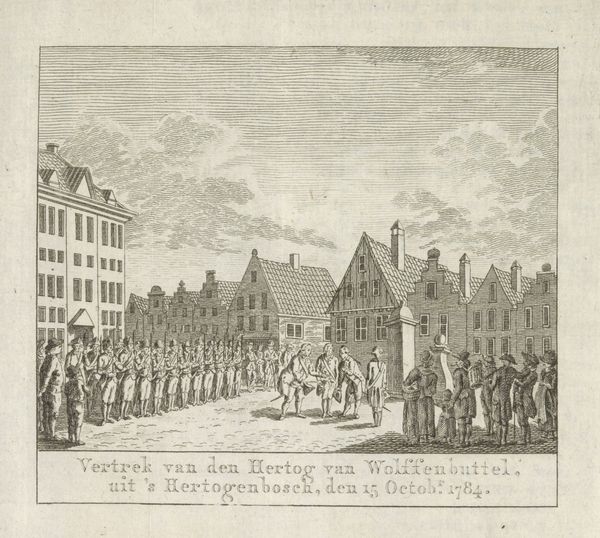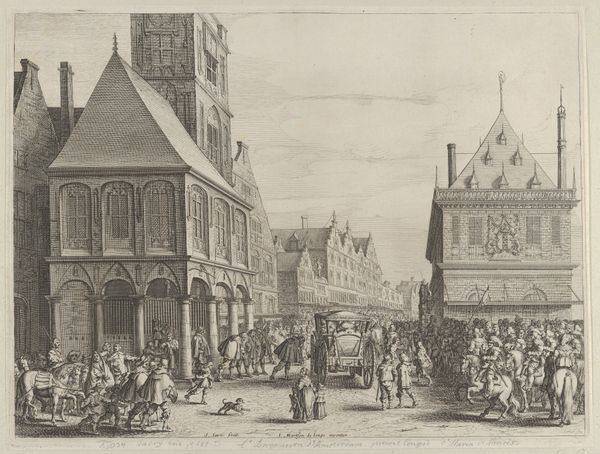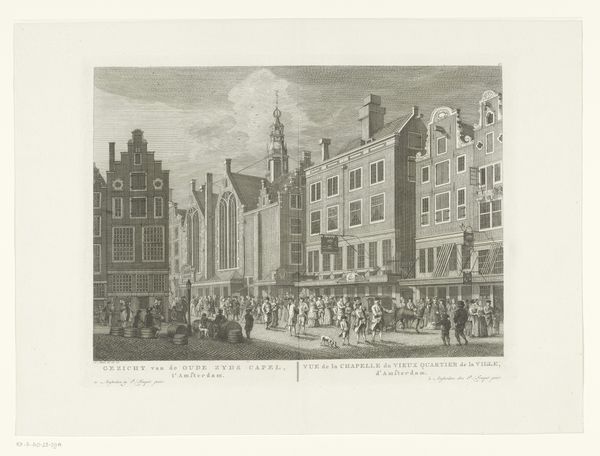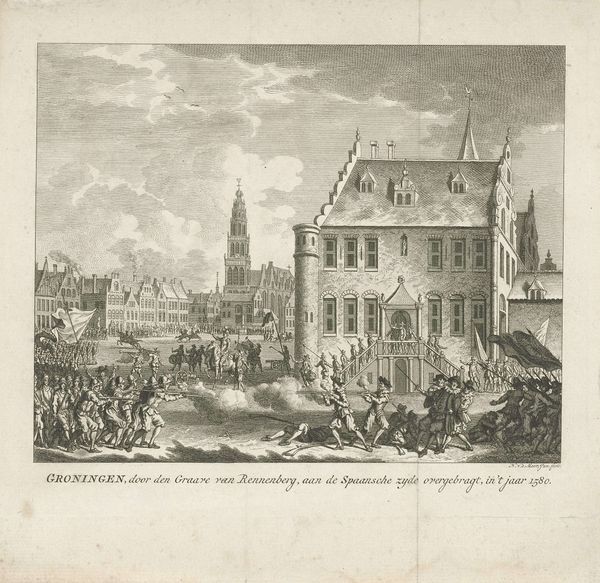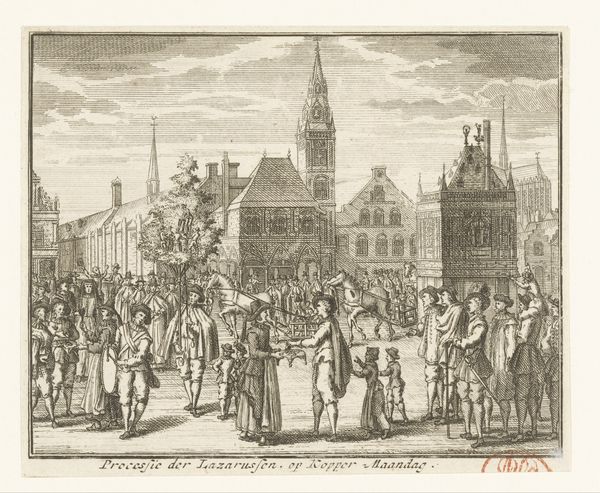
print, engraving
#
baroque
# print
#
cityscape
#
genre-painting
#
engraving
Dimensions: height 175 mm, width 226 mm
Copyright: Rijks Museum: Open Domain
Curator: Before us is "Riot in Hoorn, 1470," an engraving rendered by Noach van der Meer the Younger in 1752, now residing at the Rijksmuseum. Editor: The scene crackles with tension! The gray tones amplify the sense of unrest. The figures are dense, almost like a swarm—a disquieting mass. Curator: Indeed. Meer captured a historical moment of civil disturbance. Note the medium—engraving. Think of the skilled labor involved, the meticulous process of etching the design onto a metal plate, then inking and pressing it to paper. It speaks to a time before mass production, a dedication to craft in disseminating images of current events. Editor: I'm struck by the symbolism embedded within. Look at the central building, seemingly a town hall. It acts as an anchor of order, surrounded by chaos. The banners rippling above the crowd, I wonder what ideologies they represent. There is also an individual carrying the tools of smithery or construction – how were different industries positioned within this uproar? Curator: Precisely. And consider the societal context. The title tells us of a riot, due to the instigation of excises in 1470. Such taxes invariably stirred up resistance from producers and consumers alike. Meer's work is not merely an artistic rendering; it's a document of social conflict, manifested through the physical production of printed material. Editor: These figures in the foreground; they almost act as spectators. A cross-section of society caught in this maelstrom? There's a narrative unfolding about power, resistance, and the collective psyche. The event speaks to the tensions between local governance and widespread opposition. It evokes feelings about historical power dynamics in the Dutch states. Curator: Reflecting on this, one appreciates how a single print, the result of skilled labor, can encapsulate such potent social commentary, its physical creation intertwined with the very unrest it depicts. Editor: Ultimately, the print serves as a reminder of how public memory and collective symbolism reflect historical and political moments, with implications reverberating even today.
Comments
No comments
Be the first to comment and join the conversation on the ultimate creative platform.
